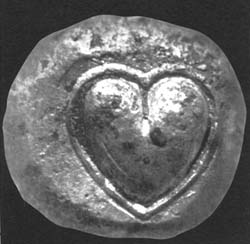The ancient Greeks and Romans ate it all
Back in classical antiquity times, the world revolved around silphium. It was used in cooking, its sap was used as a medicinal treatment and as birth control, its flowers were used for perfume, and its relative scarcity caused it to become the basis of several forms of currency. But you've probably never heard of it, because it went extinct some time during the rise of the Roman Empire.
What was silphium? Its exact identity remains a mystery, but most contemporary scholars believe it was an aromatic relative of the parsley, wild carrot, and fennel plants. (Some believe it might be a rare species of giant fennel called Ferula tingitana, which is beginning to slowly return to North Africa.) It grew in a small area along the coastline of Cyrenaica (now known as Libya) in a small area of only about 4,300 square miles. Its relative scarcity and difficulty growing anywhere else no doubt contributed to its value, but it also helped spelled the plant's demise.
Silphium was so valuable that ancient Greek coins were stamped with its likeness. In fact most of the coins of the Cyrenian economy bore images of the silphium plant. And there is ample evidence to suggest that silphium remains with us today, in the familiar heart shape. This shape was embossed on many Cyrenian coins, possibly because it represented the shape of the silphium's seed pod.
There were many medicinal uses for silphium, although it's difficult to judge from a modern perspective how much actual medical benefit the plant conferred. It was used to treat many maladies, from sore throats to unwanted pregnancies. But then again, so were a lot of odd and useless substances, so who knows.
Silphium's main use was culinary. It was almost ubiquitous in ancient Greek and Roman cooking, and appears in most of the recipes in Apicius, which is the most comprehensive ancient Roman cookbook. Basically the Roman version of The Joy of Cooking.
Its use in cooking is no doubt partly responsible for the plant's untimely extinction. There developed a fad for the meat of animals who grazed on silphium, sort of the ancient world's version of Wegyu beef. This fad led many people to let cattle loose in the silphium fields, where they overgrazed the land as well as damaging the fragile coastline ecosystem with their hooves.
According to legend, the emperor Nero ate the world's very last piece of silphium. A plant named asafetida took its place as a shabbier, off-brand substitute.
